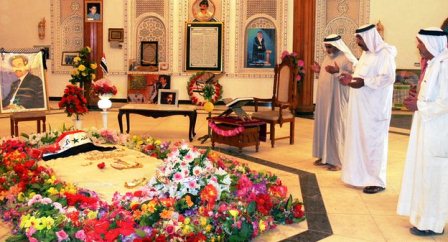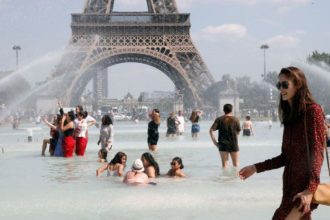The tomb of former Iraqi dictator Saddam Hussein was utterly destroyed following heavy clashes between Islamic State (IS) militants and Iraqi forces in the ongoing fight for control of the city of Tirkit.

“Iraq needs more airstrikes to dislodge Islamic State militants from Tikrit”, senior officials claimed today as the campaign to retake Saddam Hussein’s home city stalled for a fourth day due to homemade bombs and booby traps.
Iraqi security forces and mainly Shia militia pushed into Tikrit last week but have struggled to advance against the militants who are holed up in a vast complex of palaces built when Saddam was in power. Government forces are in control of the northern Qadisiya district as well as the southern and western outskirts of the city, trapping the militants in an area bounded by the river that runs through Tikrit.
“We need air support from any force that can work with us against IS,” Deputy Minister of Defense Ibrahim al-Ilami told the media, declining to say whether he meant from the U.S.-led coalition or Iran, which is playing a role in the assault.
The US-led coalition has been conspicuously absent from the offensive, the biggest to be undertaken by Iraqi forces since Islamic State overran around a third of the country last summer including Tikrit.
More than 20,000 troops and Iranian-backed Shia militia are taking part in the operation, which began two weeks ago, supported by a contingent of Sunni fighters from the area. “We have been saying we need more air support for all of the operations,” the Prime Minister’s spokesman Raid Jubbouri told the international media. “We welcome air support for all our campaigns against IS.”
Iraqi security forces vowed to reach the centre of Tirkit within 48 hours after fighting intensified to the north and south of Saddam’s hometown yesterday.
Of the once-lavish tomb, the columns that held up the roof were all that remained. The poster-sized pictures of the former dictator, which once covered the mausoleum, were lost amid the mountains of concrete and rubble.
Instead, Shia militia flags and photographs of militia leaders marked the predominantly Sunni village, including that of Major General Qassem Soleimani, the powerful Iranian general advising Iraqi Shia militias on the battlefield.
“This is one of the areas where IS militants massed the most because Saddam’s grave is here,” said Captain Yasser Nu’ma, an official with the Shia militias, formerly known as the Popular Mobilisation Forces. He added that IS militants set a trap by planting bombs around the tomb.
Tikrit has been under the control of the IS since June 2014 following a blitzkrieg type offensive which took Mosul – Iraq’s second largest city- under its control.
The militants were helped in their conquest of northern Iraq by Saddam loyalists, including military veterans.
In August last year, IS claimed that the tomb had been completely destroyed, however, local official said it was just ransacked and burned, suffering only minor damage.
Captured in 2003 by US forces, Saddam Hussain was hanged in 2006 after an Iraqi special tribunal found him guilty of crimes against humanity for the mass killings of Shias and Kurds.
The mausoleum in Ouja was also his birthplace, where his body had been kept since 2007.
The complex featured a marble octagon at the center of which a bed of fresh flowers covered the place where his body was buried. The extravagant chandelier at its centre was reminiscent of the extravagant life he led until US forces toppled him in 2003.
It was reported last year by Iraqi media that Saddam’s body was removed by loyalists amid fears that it would be disturbed during fighting, after which, the body’s location has not been known.
Recapturing Tikrit, an IS bastion on the Tigris river, would pave the way for an assault on Mosul, which could come as early as next month, US officials have said.





